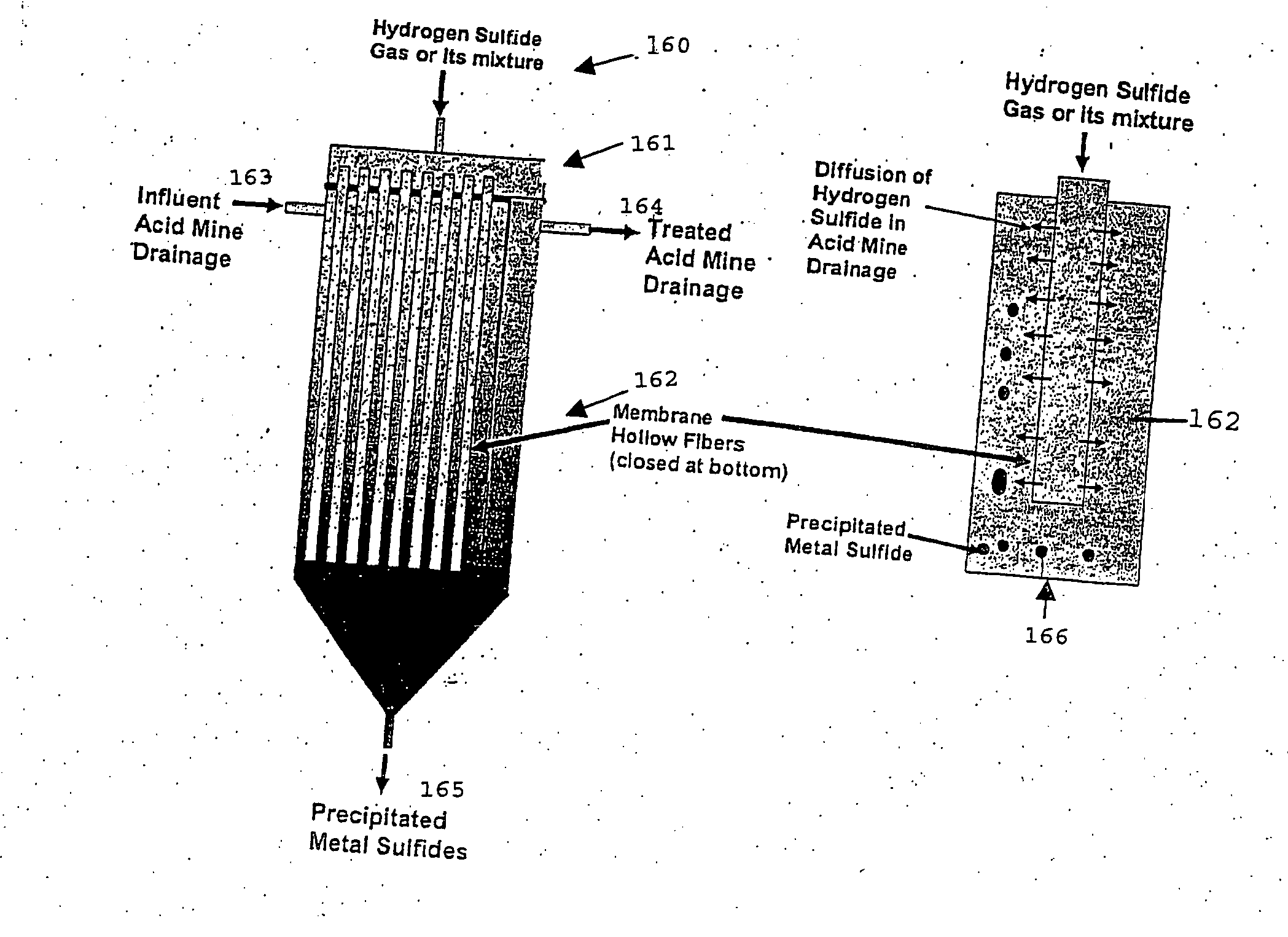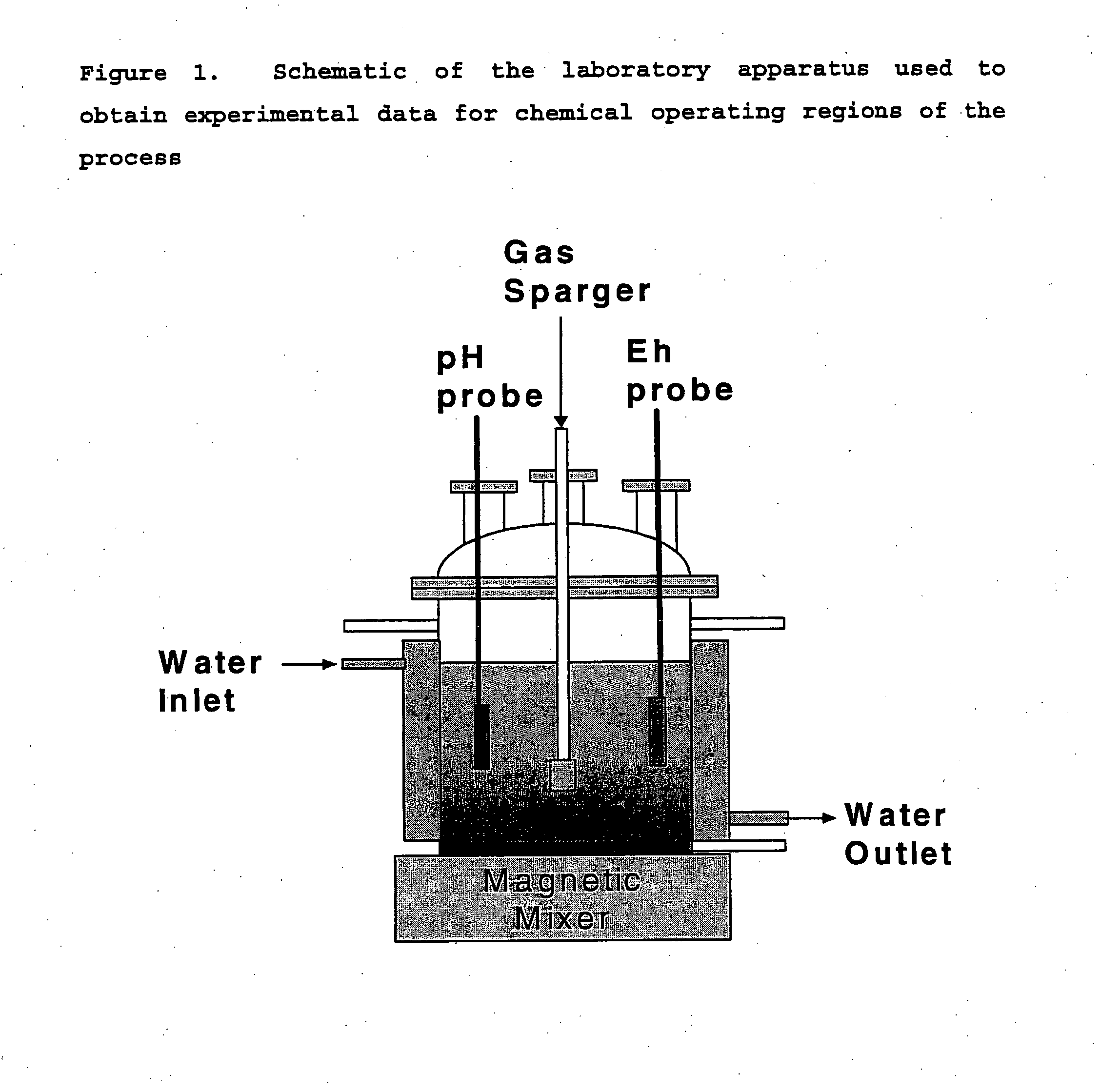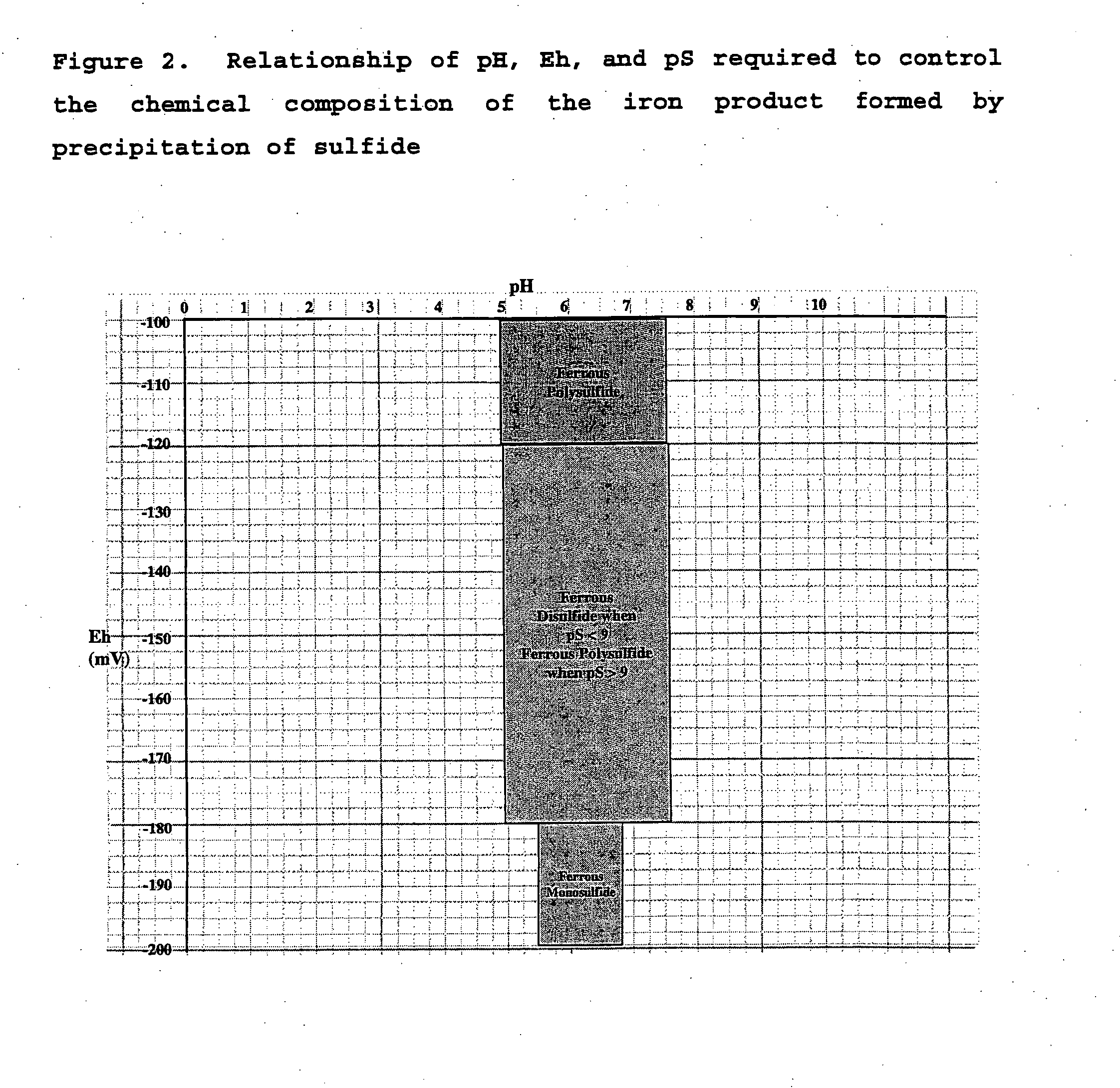Process for the purification of acidic metal-bearing waste waters to permissable discharge levels with recovery of marketable metal products
- Summary
- Abstract
- Description
- Claims
- Application Information
AI Technical Summary
Benefits of technology
Problems solved by technology
Method used
Image
Examples
experiment 2
elective Precipitation Experiment Using Hydrogen Sulfide
[0080] In this experiment, the tests were conducted batch-wise sequentially rather than simultaneously. The AMD was blanketed under argon gas and stirred continuously. The precipitation was conducted in batch-wise stages, using the filtrate liquid from the previous stage.
[0081] The pH at each stage was adjusted before precipitation using a caustic solution, either sodium or potassium hydroxide. The pH values selected for each batch stage are given in Table 6. Once the correct pH value had been obtained, the AMD solution was introduced into a hermetically sealed apparatus that provided capabilities for measuring the pressure of the head space, the removal of gas from the head space, and the introduction of hydrogen sulfide gas from an external source. Caustic was used as the precipitating agent in the aluminum removal stage.
[0082] The head space within the reactor was then evacuated by the vacuum pump. Once evacuated, the flow...
experiment 3
embrane Precipitation
[0088] Although metals can be precipitated as sulfides using hydrogen sulfide gas, either alone or in a mixture, there are several problems associated with using sparged gas. These problems include the following issues. [0089] 1. The unused hydrogen sulfide gas must be recycled into the precipitator, which requires a recycle compressor. [0090] 2. The use of a recycle compressor introduces high investment and operating costs for the mechanical equipment because hydrogen sulfide is a corrosive gas. [0091] 3. It is critical to control the rate of hydrogen gas dissolution in water and subsequent reaction with the metal sulfates to form insoluble sulfides that are of sufficient size to settle rapidly. In a sparged system, it is difficult to control the addition of hydrogen sulfide gas in stoichiometric or controlled amounts to the acid mine drainage liquid, since the usual method is simply to bubble the gas through the liquid. [0092] 4. The formation of colloidal met...
experiment 4
with Membrane Precipitator and Encapsulated SRB bacteria
[0106] Experiments were also conducted with membrane precipitator and encapsulated SRB bacteria in gel beads. Active sulfate reducing bacteria (SRBs) were encapsulated in two kinds of gels: (1) silica gel; and (2) polyvinyl alcohol gel. Silica gel beads were made as follows: [0107] 3% alginate solution and distilled water were added into the colloidal silica solution so that the final concentration of alginate, biomass and colloidal silica would become 1.5%, 5% and 5-20%, respectively. The pH of the colloidal silica solution was maintained between about 6-7. The solution thus prepared was dropped into a 5% CaCl2 solution to form beads of about 0.4 cm in diameter. Then the beads were cured for 5 hours in the solution containing equal concentration of biomass in gel in order to prevent bacteria from diffusing out into the liquid solution.
[0108] Polyvinyl alcohol beads cross-linked with sodium nitrate were synthesized as follows:...
PUM
| Property | Measurement | Unit |
|---|---|---|
| Fraction | aaaaa | aaaaa |
| Electric potential / voltage | aaaaa | aaaaa |
| Electric potential / voltage | aaaaa | aaaaa |
Abstract
Description
Claims
Application Information
 Login to View More
Login to View More - R&D
- Intellectual Property
- Life Sciences
- Materials
- Tech Scout
- Unparalleled Data Quality
- Higher Quality Content
- 60% Fewer Hallucinations
Browse by: Latest US Patents, China's latest patents, Technical Efficacy Thesaurus, Application Domain, Technology Topic, Popular Technical Reports.
© 2025 PatSnap. All rights reserved.Legal|Privacy policy|Modern Slavery Act Transparency Statement|Sitemap|About US| Contact US: help@patsnap.com



